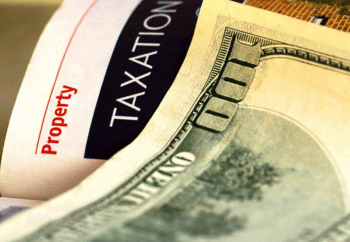Caution Advised In Calling For Property Tax Relief

Texans are clamoring for property tax relief, but a real estate expert for the Real Estate Center at Texas A&M University urges caution when searching for replacement revenue. Californians know exactly what he’s talking about.
“In California, Proposition 13 was supposed to keep taxes down by limiting appraisal growth rates,” said Dr. Charles Gilliland, research economist. “But the benefits have been far from beneficial. Texans can learn from the changes Californians made and what ultimately went wrong.”
California voters passed Prop 13 in the late 1970s to limit annual home appraisal increases to 2 percent as long as the property’s ownership remained unchanged. Back then, there were predictions the move would cause assessed values to lag market values. Those proved to be correct.
“Decades later, the gap between California’s market and assessed values ensured that assessed values continued to rise even when home prices fell,” said Gilliland.
“Homeowners faced with diminished home value angrily demanded to know how their taxable value could keep rising.”
There have been other unintended consequences of Prop 13. New homebuyers found they did not qualify for the substantially lower taxes applied to long-term homeowners. Long-term homeowners were reluctant to sell; newcomers and younger homeowners feared the higher taxes. All that led to a negative impact on California’s public schools.
“The U.S. Supreme Court upheld Proposition 13,” said Gilliland. “That suppressed school district revenue growth and virtually eliminated local control over most school funding.”
Gilliland suggests any evaluation of alternative tax policies consider four important questions:
- Will it provide an adequate tax base to support the budgeted activity at an acceptable rate?
- Will the tax inflict a minimal distortion to the signals guiding economic decision making?
- Will the tax system be readily understandable?
- Will the tax policy be regarded as “fair”?
“Property taxes are an emotional subject,” said Gilliland, “especially when property owners receive their annual notices from the local appraisal district. Texas property taxes are among the highest in the nation, and people are looking for ways to reduce the size of the bite taxes take out of their wallets.
“While property taxes are something nobody likes, including me, Texans should be careful about how they try to change the system. They could end up doing more damage to the economy,” said Gilliland.
“It’s complicated. If you cut property tax rates, you could end up cutting school funding or limiting expenditures on cities and counties. An across-the-board adjustment could get the state more involved in local decision-making. The state could get in the business of determining local tax rates.”
Gilliland notes that when all state and local taxes are considered, the Texas tax burden ranks much lower than most states.
Gilliland’s article, “Tax or Consequences,” is available on the Real Estate Center’s website.
Funded primarily by Texas real estate licensee fees, the Real Estate Center at Texas A&M University was created by the state legislature to meet the needs of many audiences, including the real estate industry, instructors, researchers and the general public. The Center is part of Mays Business School at Texas A&M University.
Media contact: David S. Jones, Texas A&M Mays Business School.





